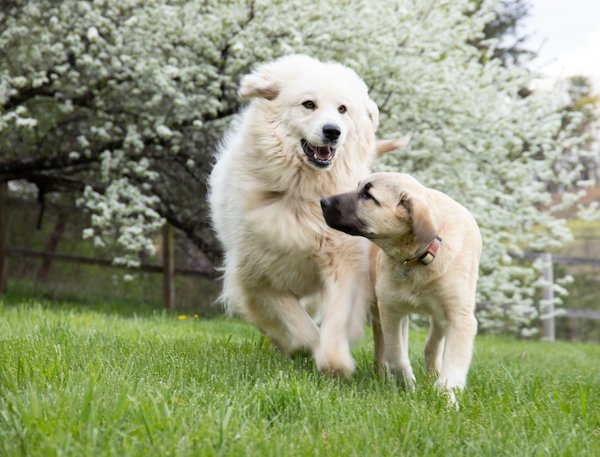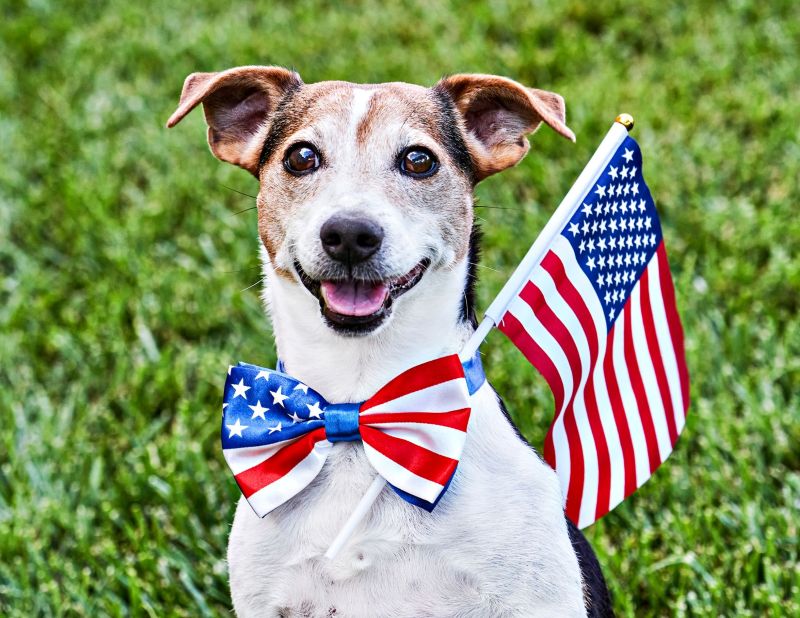There are more than 30,000 dog daycare businesses in the US with a growth rate of more than 7% annually; creating safe off-leash playgroups for both staff and the dogs that come to daycare is critical to the success of your business. Using the five essential steps below, staff will be more engaged, your facility will be safer, and you will send your daycare dogs home the best version of themselves.
Conducting Effective Evaluations for Safety in Your Dog Daycare Business
The easiest way to create safe playgroups is to ensure that you do not accept the ‘wrong’ types of dogs into daycare. Not all dogs are well suited for off-leash play and it’s crucial for staff to discern when it’s appropriate and when alternative options should be offered to owners. Designing the right evaluation process is the key to reducing your risk of any future issues.
In an off-leash playgroup, dogs should be categorized into three groups based on their behavior: Green, Yellow, and Red. Green dogs are the easiest to manage, while many yellow dogs can be effectively handled by experienced staff and may improve over time with socialization. Red dogs pose a high risk and are generally not suitable for playgroups.
Selecting the appropriate mix of dogs for your facility depends on the skill level and training of your playgroup staff. Yellow dogs typically require experienced leadership and active management to thrive. Establishing a specific goal for the desired mix of green to yellow dogs is crucial (e.g., starting with 80% green and 20% yellow). Commit to these percentages by documenting them, as making objective decisions will contribute to creating a safe, enjoyable, and successful playgroup environment.
The ultimate goal is to ensure that every dog leaves the facility behaviorally better than when they arrived. If you lack a documented assessment and monitoring program, it’s time to develop one without delay.
Key Criteria for Daycare Dog Evaluations
Previous experience with dog daycare?
- Green: has previously attended a daycare that you know operates a safe and professional environment.
- Yellow: has attended a facility that you have concerns about
Dog Daycare Playstyle
- Green: the dog is easygoing, takes breaks from playing, and indicates self-control
- Yellow: the dog plays rough, doesn’t take breaks, barks during play, or has prey drive
Response when upset
- Green: will back away, hides, or in general is submissive
- Yellow: will barks, shakes, whimpers and expresses fear with little tolerance
Resource Guarding
- Green: will happily share toys & food with other dogs and people
- Yellow: will share some items, but may guard high-value items like bones or chews
Bite History
- Green: no history of biting or aggressive responses
- Yellow: may growl, snap, or low-level bite history (Ian Dunbar level 1 or 2)
Obedience Training
- Green: The owner uses cues often in the home and/or has attended multiple obedience classes or had private training lessons
- Yellow: has attended 1 training class or lesson and occasionally owner uses cues in the home
Response to Meeting New People in a New Environment
- Green: The dog initiates interaction with you and stays for more than 2 seconds
- Yellow: The dog tolerates the greeting with a display of safe body language
Response to your Touch & Handling
- Green: displays submissive gestures and is accepting of the interaction
- Yellow: tolerates handling but displays multiple stress signals or has initial resistance to your handling
Response to Obedience Cues
- Green: attentive when called by name, makes eye contact, and responds to the cue
- Yellow: not consistent in response or attention or easily distracted by the environment during cues
Evaluator Dog Greetings
- Green: mostly polite and willing to interact and greet
- Yellow: some rude behaviors tolerated by evaluator dog, but willing to interact and shows interest in another dog
Small Group Interactions
- Green: interacts with dogs, plays, and is accepted by the group
- Yellow: tolerates being in small groups, but displays some stress signals and/or looks to humans for comfort
Large Group Interactions
- Green: interacts with dogs, plays, and is accepted by the group
- Yellow: tolerates being in small groups, but displays some stress signals and/or looks to humans for comfort
Stress Indicators
- Green: very few signals and if displayed only for a short period
- Yellow: medium level of signals of stress for a short period
Body Postures
- Green: relaxed and playful posture majority of the time
- Yellow: alert, anxious, confident, or stiff postures displayed frequently
Energy Levels
- Green: low to moderate with a natural flow between play and rest. Does well self-regulating
- Yellow: moderate energy, but high when dogs arrive. Very few rest cycles on their own
Leveraging Dog Daycare Software for Efficient Management
If you are using dog daycare software, there will be a section within the software to score the dog’s rating for daycare, and add any icons to alert staff about potential issues or specific does that they may not get along with. Within Kennel Connection’s software, the score will also correlate to online booking so that if they are not a good fit, the pet owner won’t have the option to book dog daycare appointments online.
As you design the evaluation process for your dog daycare business, it’s also important that you design the check-out experience to ensure that your staff is recommending your “Intro to Daycare” package. This should be a 6-day package that encourages new clients to come in 2x per week for 3 consecutive weeks to make sure that you can understand how they interact will all types of dogs they will interact with. As a benchmark, you should convert 90% of all ‘passed evaluations’ into the package purchase.
Ensuring Safety and Emotional Health in Your Dog Daycare Facility
First and foremost, the safety and well-being of the dogs must be your top priority. While physical safety is crucial, it’s equally important to focus on the emotional well-being of the dogs during social play. Your facility design, operational policies, and procedures should all be geared towards keeping dogs both physically safe and emotionally well. All dogs in your care should be sent home the best version of themselves.
Understanding Canine Behavior
Before allowing your team members to deliver dog daycare services, it’s essential to have a deep understanding of canine behavior. Merely loving dogs or having experience with your own pets is not enough. You need to comprehend dog language, breed tendencies, stress signals, warning displays, and play behaviors. Invest in resources and education to provide this knowledge for all staff when they are first hired.
Staff Training
The quality of your dog daycare services is directly correlated with the competence of your staff. Ensure that each member of your team is well-trained in dog behavior and professional pet care. Continuous investment in staff training is essential to maintaining high standards of supervision and ensuring the safety of all dogs under your care.
Ask yourself: How is your staff trained?
It’s not enough for your staff to simply love dogs. They must possess a solid understanding of canine body language, be able to recognize stress signals, understand normal and abnormal displays of aggression, and demonstrate excellent leadership skills when interacting with dogs. If your staff lacks these essential skills, it’s time to implement a formal training program. Just as parents wouldn’t leave their child at a beach without a trained lifeguard, dog owners shouldn’t leave their pets at a dog daycare without properly trained attendants. A structured staff training program is key to reducing accidents during off-leash play and ensuring that dogs have a fun and safe experience. I love the training program that is provided by PackPro, which has created a staff training program that uses workbooks, and videos and integrates a testing process that can monitor staff progress towards certification and completion of each module.
Staff-to-Dog Ratios
With most of the dog daycare industry being unregulated, the staff-to-dog ratios will vary. And while it is safe to say that the smaller the ratio the safer the group; it’s also true that the smaller the ratio the smaller the profit margins for your business.
The staff-to-dog ratio should prioritize safety first, however, other factors to consider are the experience of your staff, the size of the dogs, the evaluation process you follow, and the ratio of green to yellow dogs. Even well-trained staff should only supervise a limited number of dogs. It’s common for a dog daycare to have a ratio of 15:1, but I’ve seen groups as high as 25:1 (but not recommended).
Educate Dog Owners
Part of your responsibility as a provider of dog daycare is to educate dog owners about their pets’ behavior and the steps necessary for successful off-leash play. Share the training and knowledge you and your staff have acquired and explain the key aspects of your operations that ensure the safety and well-being of their dogs. Transparency and communication are key in fostering trust with your clients.
Keep Play Fun
Lastly, remember that dog daycare should be enjoyable for all dogs involved. Spend time observing the body language of each dog to ensure they’re relaxed and having fun. Provide engaging activities, toys, and games to keep the play sessions enjoyable and stimulating. Encourage natural breaks and rest periods and ensure that your staff maintains a positive and engaging environment without resorting to frequent corrections or disruptions.
One way to boost the enjoyment of your daycare attendants and drive revenue is through structure enrichment activities. I like to focus on all 5 forms of enrichment, but I carefully consider the labor associated with the activities I implement.
- Social
- Nutritional
- Sensory
- Occupational
- Physical
By following these steps, you’ll be well on your way to mastering off-leash dog play and creating a safe and enjoyable environment for all furry participants. Your commitment to the safety and well-being of the dogs under your care will not only set you apart from other dog daycare businesses in your area but will also enrich the lives of the dogs and their owners alike.



